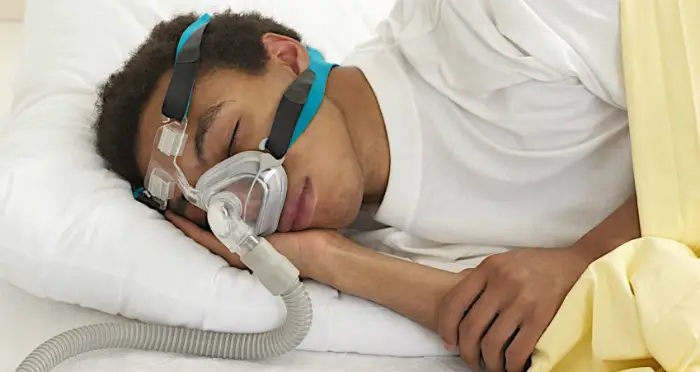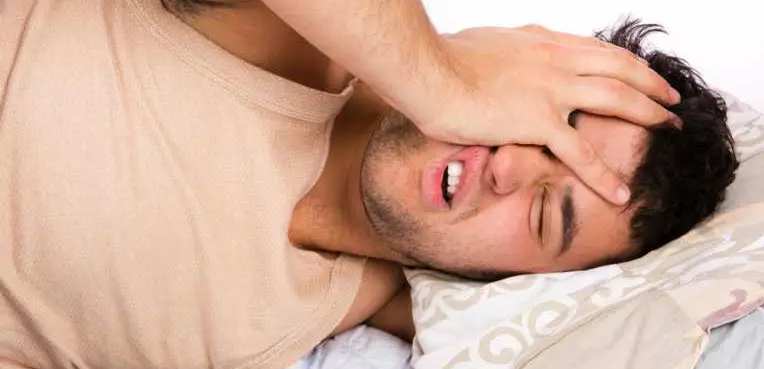According to the National Sleep Foundation, about 35% of adults rate their sleep quality as either poor or fair. The supposed rest time is compromised due to a variety of disorders and sleeping problems. We don’t need to be doctors to know that enough sleep plays a vital role in the mood, cognitive functions, and behavior of a person. With that, it’s pressing to know the solutions for sleeping problems even before it causes more serious effects.
At least once in our lives, we will have trouble sleeping. It could be due to an unfinished school project, our crush, or our severe worries. Most of these will go away in a matter of days, but there are sleeping problems that linger. It seems to be a simple bedtime struggle until it starts to interfere with your daily life and your work or school performance.
Here, we’ll take a look at 10 of the most common bedtime issues and how to fix sleeping problems:
Snoring
Snoring is probably the most common sleeping problem. Almost all back sleepers would be sounding off in their sleep. This happens when the throat becomes narrower as the back of the tongue presses back. Men are more likely to snore, especially those who are overweight. It’s not really a serious problem as long as it occurs intermittently.
However, snoring becomes louder as the person grows old. This can stir a heated argument on the bed with your partner. As it progresses, snoring will start to disrupt your partner’s sleep. It can also wake you up multiple times per night as snoring impedes breathing.
Sleeping on your side usually cuts the snoring low. Some people put on a wearable device that will force them to return on their side when the body starts to lay flat again. This may sound silly, but you can place a football inside a kid’s backpack then wear it to sleep. After a few weeks, you may get used to side sleeping.
In worst cases of snoring, the person undergoes a corrective surgery as a way on how to fix sleeping problems.
Insomnia
Insomnia isn’t just about the total lack of shuteye. Some people tend to drift in short moments of slumber then wake up again. This causes restlessness and daytime exhaustion. This can be a temporary case when a person happened to ingest a stimulating substance like caffeine or some medication. Solutions for sleeping problems like this are avoiding anything that will induce wakefulness.
However, insomnia can stem from a bigger problem. Individuals suffering from depression, anxiety, and severe worrying will have a series of sleepless nights. Take note that a few nights of poor sleeping don’t always qualify as insomnia. This condition is chronic and one must be under troublesome sleeping for three months before being considered insomniac.
People with insomnia usually undergo cognitive therapy or prescribed to take certain medications to doze off. Take note that some individuals tend to be conditioned by insomnia. What happens is that they fail to fall asleep as their mind already associated bedtime with difficulty and struggle.
Although rare, a disrupted circadian rhythm could also be the cause of insomnia. Alcoholics and dope fiends will likely to suffer from this condition too. Knowing how to fix sleeping problems like insomnia is a bit tricky.
Sleep apnea
A lot of people write off snoring as a pesky problem, but this could be a possible sign of another sleep disorder – sleep apnea. Individuals suffering from sleep apnea will experience momentary stoppage of breathing which will induce awakenings. The weird part here is that those with sleep apnea may not remember that they woke up multiple times. The only sign in the morning is a bad case of a headache and exhaustion.
Sleep apnea happens due to partial or complete blockage of the throat. A lot of those who have this condition don’t even know that they have it. Only until someone sleeps by their side and tells them about the loud snoring that they will know something is wrong.
For those with chronic sleep apnea, CPAP or continuous positive airway pressure machine is one of the solutions for sleeping problems. The person wears an oxygen-like mask in bed to keep the throat blockage open. This could be a bit inconvenient especially if you are a freestyle sleeper.
It’s pressing to see a doctor if sleep apnea is starting to compromise your daily activities. It can be life-threatening if not addressed early on.

Delayed sleep phase disorder
The delayed sleep phase disorder is when a person’s circadian rhythm got messed up. What happens is that the person sleeps or wakes up later or earlier than most people. It’s easy to think that this is just a matter of poor sleep hygiene but delayed sleep phase disorder is more than the preference to stay up late.
This disorder is common among teens which make them struggle to keep up with class schedules or a 9-5 job. Most of the time, people with this disorder simply can’t fall asleep at any hour that’s earlier than 2 am to 6 am. But how to fix sleeping problems like this?
The good news is that a person suffering from delayed sleep phase disorder can grow out of it. During summer vacation, kids can start to fall back to regular sleep schedules. Medical solutions for sleeping problems may not be required.
If the disorder persists, the person can undergo chronotherapy or light therapy to fix the problem. Sometimes, removing distractions like gadgets, television, or late night habits can help a person pull away from this disorder.
Narcolepsy
Narcolepsy is a serious sleeping problem. A person with this condition will fall asleep in the most inopportune moments. A narcoleptic individual can doze off in the middle of a dance number or while talking. Sleep attacks are uncontrollable and it doesn’t spare any activity during the day.
This condition is caused by the dysfunction of the REM regulating areas of the brain. The worst thing is that narcoleptic people can’t distinguish the line between being awake and asleep. Even the most lively and noisy places can’t stop a sleep attack – yes, even an exploding bomb. This makes knowing how to fix sleeping problems like these a difficult ordeal.
If that’s not enough of a problem, narcoleptic people may also suffer from cataplexy. It’s the fainting-like attacks due to an intense emotional reaction to almost anything. However, the person remains conscious despite the physical manifestation of collapsing. Cataplexy attacks can be triggered by even the most mundane things like a funny-looking cookie or a joke. Funny as it seems, but this condition is no laughing matter.
Unfortunately, there are no solutions for sleeping problems like these. Still, a series of treatment can help in managing or even controlling the symptoms.
Restless leg syndrome
The restless leg syndrome is the irresistible urge to move the extremities, usually manifested through sudden twitching. This condition may happen not just on the legs but also to the other limbs. However, don’t confuse this with Tourette’s syndrome. RLS happens only when the person is at rest or lying down.
A person with RLS will kick a hundred times per night which can be disruptive if he or she shares the bed with someone else. RLS has no apparent effect to sleep quality aside from the possibility of waking up if the kicking gets strong. The symptoms are characterized as creeping sensations or tingling and aching episodes.
Doctors aren’t sure what causes this condition but they suggest that it can be hereditary. Also, some pregnant women tend to suffer on this condition but it will soon wear off after birth. Only 10% of the population suffers from RLS but it’s more prevalent with women. The question is this: how to fix sleeping problems like RLS?
RLS can be managed through regular exercise and reduced caffeine intake to cut the jitters. Solutions for sleeping problems may not cure this completely. For those who have a chronic case of RLS, a special medication might be prescribed.
REM sleep behavior disorder
This condition is more than the usual case of hypnagogic jerks. The REM sleep behavior disorder causes a person to literally jump out of bed or whip violently while sleeping. Those with chronic cases may tackle furniture during an attack. This makes the disorder dangerous for both the person and the individual they share the bed with.
What happens is that during the REM phase, the paralysis stage is absent. This causes the person to act out his dreams. However, this isn’t a simple case of sleepwalking. More often, the acting out is violent and intense. It can include yelling, grabbing, punching, jumping, and kicking. The person will be awakened in every episode, more likely with a hurt head, arm, or legs.
Some sufferers may do karate chops, football tackles, cliff jumping, and more which can inflict serious injuries. Knowing how to fix sleeping problems like this doesn’t have a solid answer yet.
This is a very rare disorder, affecting only one percent of the population. The causes of the REM sleep behavior disorder are unknown but for some, it occurs together with a neurological problem like Parkinson’s disease. Medications can be administered as solutions for sleeping problems.
Sleepwalking
When I was a kid, probably 4 or 5, I would be standing up every night while dreaming. I would roam around the bedroom and sometimes wake up in the middle of it. Sleepwalking is a common sleeping problem among children but adults also have a share of nighttime wandering.
Some causes of sleepwalking are lack of sleep, fever, too many liquids before bedtime, and illnesses. As to why it’s more prevalent among kids, the doctors are at loss of explanation. However, an expert suggests that it could be related to brain development. The children tend to drift between sleeping and waking which cause them to “fall into sleep limbo”.
Usually, this unconscious stroll happens between the first 30-90 minutes of sleep. Experts recommend reducing anxiety and stressors if you’re prone to sleepwalking. Also, avoid taking depressants or alcohol. If sleepwalking persists and it starts to interfere with your sleep, you should consult a doctor. You might be taking some medications that trigger the condition.

Teeth grinding
Have you ever heard anyone grind as if they’re eating their teeth while sleeping? Teeth grinding or bruxism is common and it happens to about 45 million Americans. It can be due to a crooked tooth or anxiety. An abnormal bite or a missing tooth can be culprits too. However, bruxism can also take place to people with sleep apnea. Knowing how to fix sleeping problems as such will need the help of a doctor.
Most people who grind their teeth while sleeping don’t know that they are actually doing it. Only when someone tells them of the freakish thing that they will know. Usually, teeth grinders would have headaches upon waking up or a mild pain in the jaw area. Also, their roommates will be complaining about the sound.
Dentists can help reduce the harm of teeth grinding by fitting you with a mouth guard. You can also reduce stressors as solutions for sleeping problems. Another trick is to avoid chewing on something that isn’t food (pencils, pen, etc.). Chewing on these stuff makes your jaw used to clenching, thus the manifestation during sleep.
Sleep terrors
Sleep terrors are probably one of the most disturbing sleep problems. A person suffering from this will have violent and screaming outbursts in bed. The worse thing is they aren’t conscious which makes it difficult to soothe them. And if ever the person wakes up, he or she will be confused as to why such behavior took place. They will also have a faint memory of the attacks by morning.
This condition is usually mistaken to be nightmares. But unlike the latter, sleep terrors aren’t related to any emotional or dream factors. It’s just a simple and random manifestation of danger and fear.
Sleep terror attacks are short but it can wake the whole house up. It’s common among children, affecting about 40% of the kids’ population. This wears off as they age but some retained it up to adulthood. Knowing how to fix sleeping problems at such a stage requires medical intervention.
Sleep terrors can be due to underlying illnesses. But more often, those who have PTSD will be prone to this problem. Medication and improving the sleeping environment can help ease the attacks.
No matter how troubled you are at bedtime, there would be solutions for sleeping problems with the exception of some conditions. You can always consult a professional if the issue is starting to take on your regular activities.

